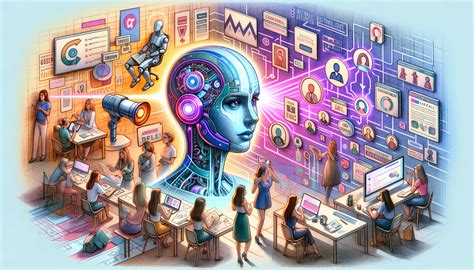explore the role of AI in the authenticity of digital resources
The digital era caused the creators to share and show their work unprecedented. However, with this greater accessibility a growing concern comes for the authenticity of digital resources. As technology is advanced, tools based on artificial intelligence are increasingly used in various sectors, including art, music and literature. But what does this digital creations mean are really authentic?
The problem of authenticity
Authenticity is a crucial aspect of any creative work. It refers to the authenticity or truthfulness of the intentions, values and emotions of a creator. In the digital kingdom, authenticity can be particularly demanding to establish. With the ease of copy and sharing of content, it becomes increasingly difficult to determine if a piece has been created by an individual or through tools fueled by artificial intelligence.
One of the main concerns with the art generated by the AI is its ability to imitate creations similar to man without being explicitly claimed as such. This raises questions about the role of authenticity in the digital era. Can a job generated by the AI be considered authentic if it does not have an apparent human hand behind it? Or should we prioritize the creator’s intentions and emotions on technical skills?
The role of Ai in Art
Artificial intelligence has been increasingly used in various forms of art, including painting, sculpture and music. While some argue that the IA can produce truly innovative and original works, others argue that the art generated by air aid does not have the soul and essence of human creativity.
Some of the benefits of AI in art include:
- efficiency : artificial intelligence can automate repetitive tasks, allowing artists to focus on more complex and creative aspects.
- Creativity : AI algorithms can generate new combinations of models and styles, leading to innovative and unexpected results.
3
However, these benefits also raise concerns about the authenticity of works of art:
- The lack of human touch : the art generated by the AI may not have the emotional depth and personal experience that derives from human creativity.
- Automated nature : the use of the AI in art can lead to a “copy-and paste” mentality, in which works of art are copied without adding new levels or meaning.
The role of authenticity in digital art
Authenticity does not only concern the creator’s intentions, but also the works of art itself. In digital art, authenticity can be obtained through various means:
- Documentation : maintenance of a registration of the creation process, including sketches, notes and technical specifications.
- Validation of experts : having experts or curators verify the origins and the creative process of works of art.
- Transparency : providing clear information on the source, methodology and intentions of works of art.
The future of authenticity in art generated by the AI

While the IA continues to advance, it will be essential to establish guidelines for authenticity in digital art. Here are some potential approaches:
- Collaborative property : assign property rights to both human creators and artificial intelligence developers, with clear guidelines on how to manage works of art.
- Artistic meritocracy : evaluation of works of art based on their artistic value and originality, rather than exclusively on technical skills.
3
Conclusion
The authentic nature of digital resources is a complex problem that requires careful consideration of both human creativity and the content generated by the AI. As technology is advanced, it will be essential to establish guidelines for authenticity in various fields, including art, music, literature and beyond.
Leave a Reply